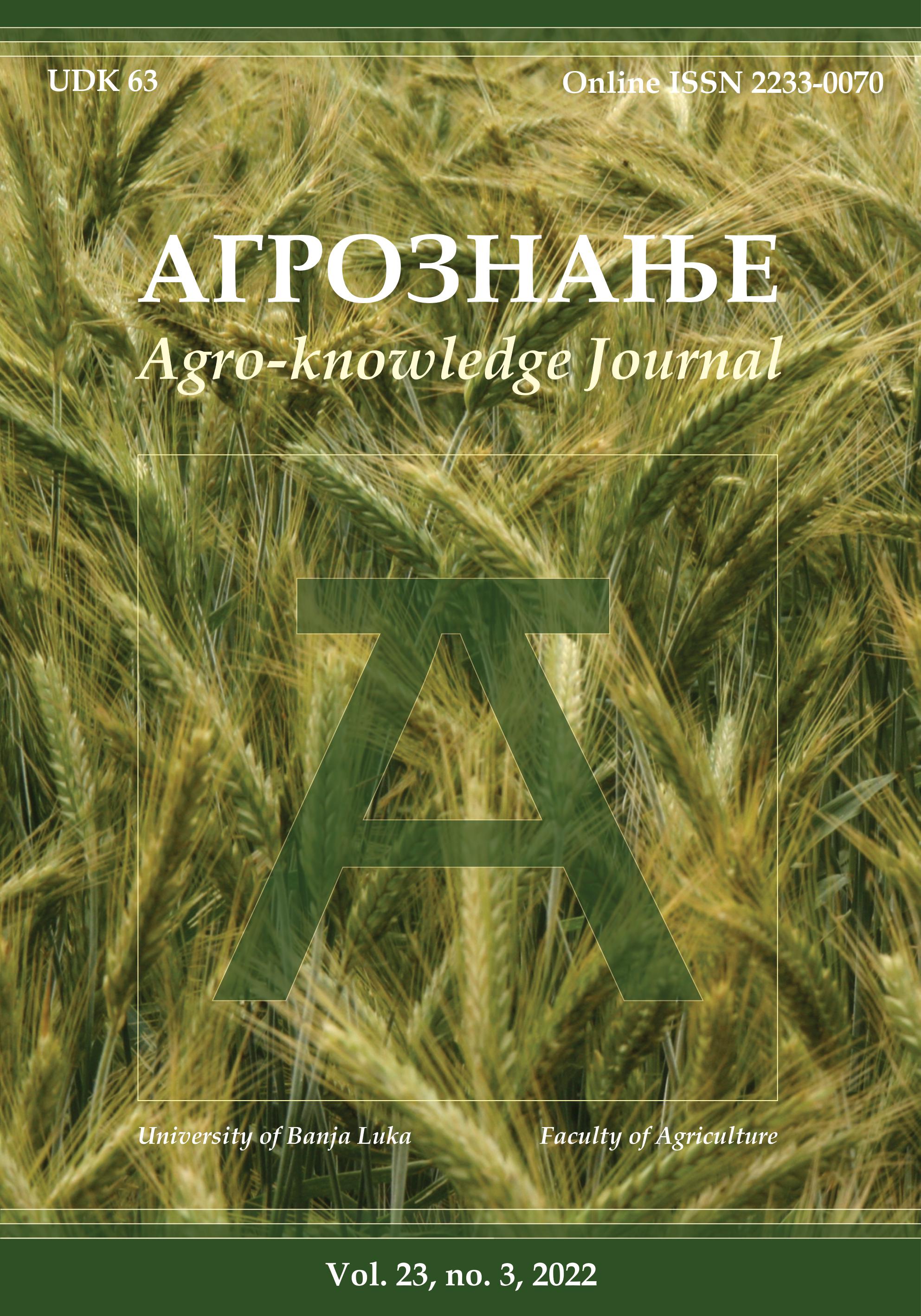Adaptability of indigenous vegetation on parking lots – A case study: Tree alleys in Novi Sad, Serbia
Адаптабилност аутохтоне вегетације на паркинг просторима. Студија случаја: Дрвореди у Новом Саду, Србија
DOI:
https://doi.org/10.7251/AGREN2203167CAbstract
In this study five indigenous species on parking lots in Novi Sad, Serbia were examined (Acer platanoides ‘Globosum’, Celtis australis L., Tilia tomentosa Moench., Carpinus betulus ‘Fastigiata’, and Corylus colurna L.). The aim of this study is to represent their adaptability to urban stress and harsh environmental conditions which are present on parking lots by valuing their dimensions and vitality. Results showed that well-adapted species are Celtis australis L. and Carpinus betulus ‘Fastigiata’. Other species had low vitality values, asymmetrical canopy, and mechanical damages that were caused by insufficient root and canopy space and insufficient distance from buildings and traffic. Choosing well-adapted indigenous species for alleys can be very challenging. Adaptability assessment of indigenous trees on parking lots in Novi Sad can be used as guidance to urban planning in Novi Sad and other cities which have a high share of pavement to reduce the climate change effect.
Key words: alley, indigenous vegetation, parking lots, street trees, urban stress

